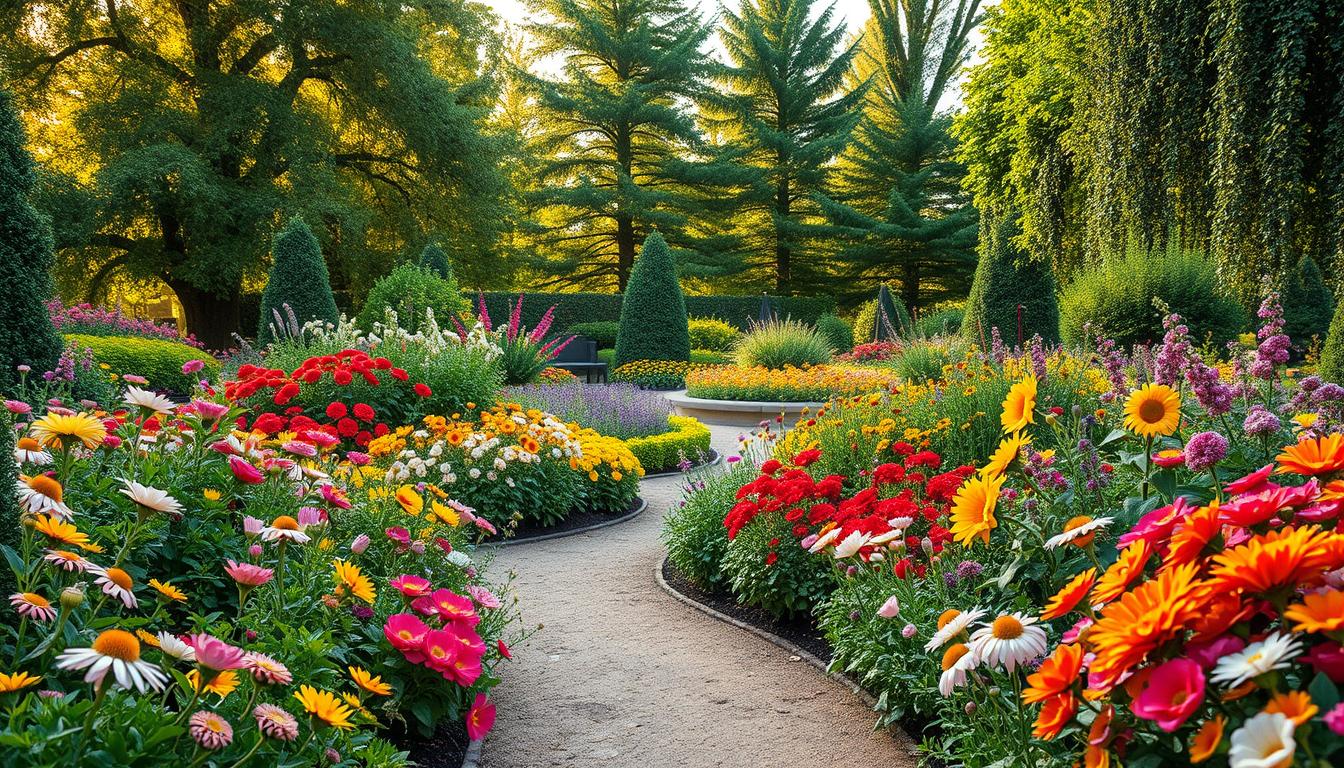Designing a beautiful outdoor space doesn’t have to be overwhelming. With the right tools, you can create a stunning and functional area that suits your style. Digital planning tools make it easy for both beginners and seasoned enthusiasts to bring their ideas to life.
Almanac Garden Planner offers free templates, plant lists, and design videos to guide you every step of the way. Whether you’re starting from scratch or refining an existing space, these resources simplify the process. Structured layouts help ensure your plants thrive while reducing maintenance efforts.
For inspiration, Almanac provides five reader-designed plans with downloadable details. These examples showcase how proper planning can lead to a vibrant and healthy outdoor area. Using a free planner is an accessible alternative to professional software, making it easier to achieve your dream space.
Key Takeaways
- Digital tools simplify the design process for all skill levels.
- Free templates and resources are available for easy planning.
- Structured layouts improve plant health and reduce upkeep.
- Reader-designed plans offer inspiration and practical ideas.
- Accessible alternatives to professional software save time and money.
Why Plan Your Flower Garden?
Creating a vibrant outdoor area starts with thoughtful planning. A well-organized space not only looks stunning but also supports the health of your plants. It’s a step that can transform your surroundings and enhance your daily life.
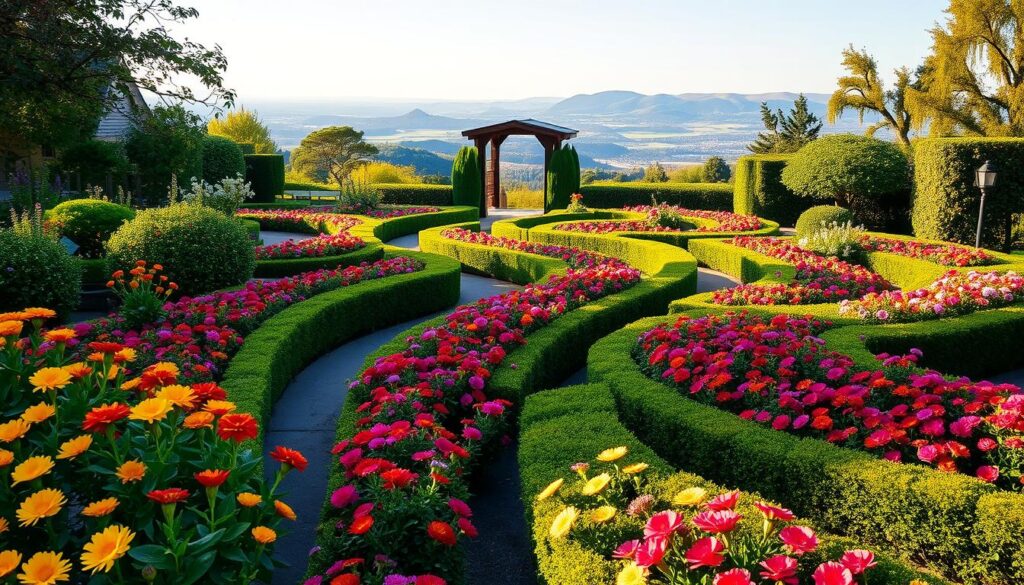
The Benefits of a Well-Planned Garden
Did you know that flowers can increase vegetable pollination by 60% when placed strategically? This is just one of the many advantages of a well-planned garden. Companion planting, for example, helps control pests naturally, reducing the need for chemicals.
Planned gardens also extend blooming seasons, ensuring your space remains colorful throughout the year. Woodstock Flower Farm is a great example of this success. Their carefully designed bouquets have become a local favorite, showcasing the power of thoughtful planning.
Moreover, landscaped gardens can boost property values significantly. Studies show that homes with well-maintained outdoor spaces sell faster and at higher prices. A beautiful garden isn’t just a treat for the eyes—it’s an investment.
How Flowers Enhance Your Life and Space
Flowers do more than beautify your surroundings. They have a profound impact on mental health. Spending time in floral environments reduces stress and promotes relaxation. It’s a simple way to bring joy into your life.
For beginners, starting with low-maintenance plants can make the process easier. If you’re new to gardening, check out this beginner’s guide for helpful tips. With the right approach, you can create a space that’s both beautiful and rewarding.
Understanding the Basics of Garden Planning
Starting your outdoor project begins with understanding your environment. A well-thought-out plan ensures your space thrives and meets your expectations. This section covers the essentials of assessing your area and selecting the right plants for your conditions.
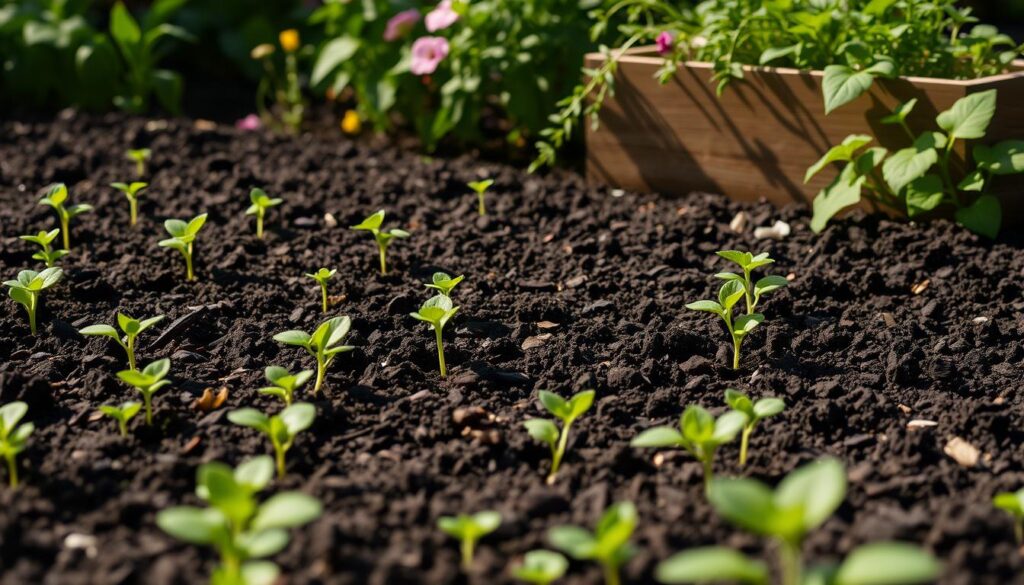
Assessing Your Space and Soil
Before planting, evaluate your space and soil. Testing your soil’s pH and nutrient levels is crucial. Kits are available to help you determine what amendments are needed. For example, heavy clay soil in Ohio has been successfully improved with organic matter, leading to vibrant blooms.
Consider the layout of your area. Raised beds offer better drainage and control over soil quality, while traditional rows work well for larger spaces. Choose the option that fits your needs and resources.
Choosing the Right Plants for Your Climate
Selecting plants suited to your climate is key to success. The USDA hardiness zone map is a valuable tool for identifying which species will thrive in your region. For instance, a Nova Scotia garden showcased a detailed seed-to-bloom timeline, highlighting the importance of timing.
If you’re dealing with challenging soil, consider clay-tolerant options. Here are five excellent choices:
- Black-Eyed Susan
- Coneflower
- Daylily
- Sedum
- Yarrow
| Layout Type | Pros | Cons |
|---|---|---|
| Raised Beds | Better drainage, easier soil control | Higher initial cost |
| Traditional Rows | Cost-effective, suitable for large areas | Less control over soil quality |
By understanding your soil and climate, you can create a plan that ensures your outdoor space flourishes. Take the time to assess and choose wisely for the best results.
Introducing the Flower Garden Layout Planner Free
Transform your outdoor space with a tool that simplifies the process. A garden planner can help you visualize and organize your area with ease. Whether you’re a beginner or an expert, this tool is designed to save time and bring your ideas to life.
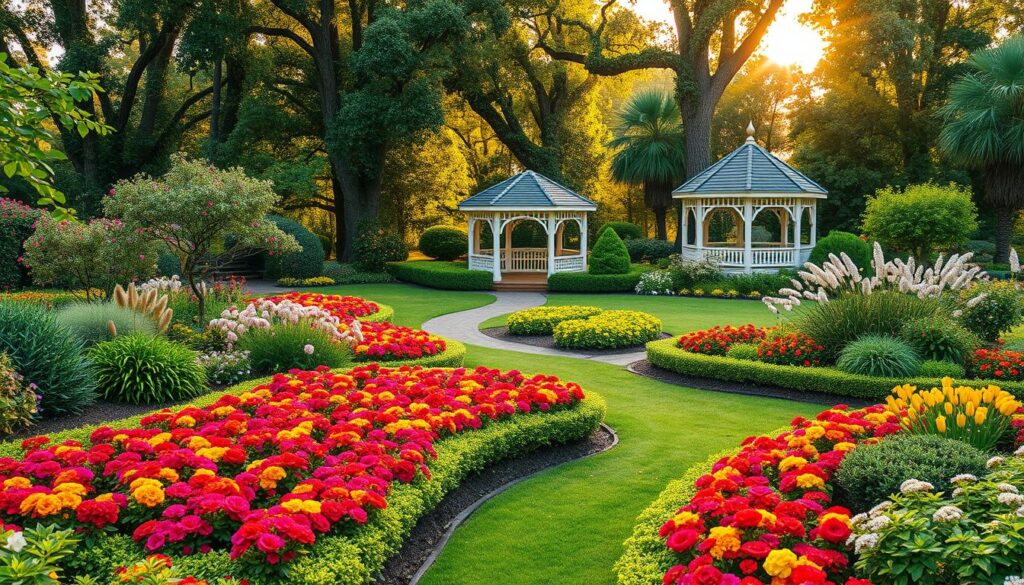
What Makes This Tool Unique?
This garden planner stands out with its user-friendly features. Unlike traditional methods, it offers 3D rendering and over 2,000 drag-and-drop objects. This makes it easy to experiment with different designs and layouts.
Here’s a quick comparison of two popular tools:
| Feature | Almanac | Planner 5D |
|---|---|---|
| 3D Rendering | No | Yes |
| Drag-and-Drop Objects | Limited | 2,000+ |
| Mobile App | No | iOS/Android |
How to Get Started with the Planner
Using this tool is simple. Follow these steps to create your first digital layout:
- Download the app or access the online platform.
- Choose a template or start from scratch.
- Drag and drop plants, paths, and other elements.
- Use the color-coding system to plan bloom seasons.
- Save and share your design for feedback.
The mobile app makes it convenient to use the planner on the go. Before-and-after examples from Sterling, VA, showcase how this tool can transform any space.
The color-coding system is a standout feature. It helps you visualize how your outdoor area will look throughout the year. This ensures your design remains vibrant and well-organized.
Designing Your Garden Layout
Crafting a functional and visually appealing outdoor area is easier than you think. With the right tools and a clear plan, you can create a space that’s both beautiful and practical. Whether you’re working with a small backyard or a larger plot, thoughtful design ensures every inch is used effectively.
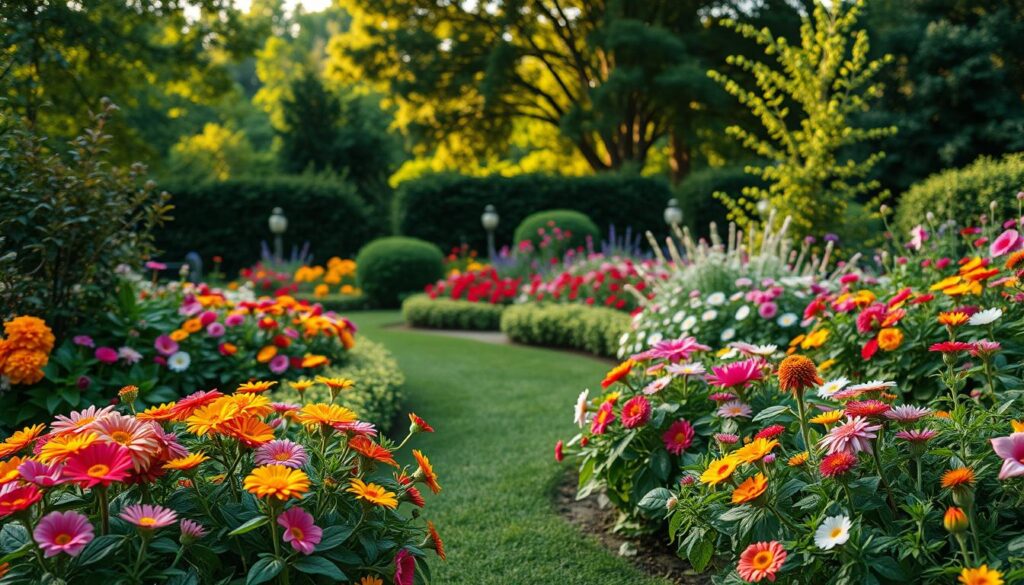
Step-by-Step Guide to Using the Planner
Start by assessing your space and identifying your goals. A 41’x59′ Illinois farm layout, for example, produced 2,400 sq ft of cut flowers by optimizing every corner. Here’s how to get started:
- Measure your area and input dimensions into the planner.
- Use layering heights to create depth—tall plants at the back, medium in the middle, and short at the front.
- Calculate spacing for common plants to ensure they thrive. For example, marigolds need 8-10 inches apart.
- Experiment with a 3D rendering walkthrough to visualize your design.
- Download a companion planting cheat sheet to maximize plant health.
Tips for Maximizing Space and Aesthetics
To make the most of your space, consider these tips:
- Use vertical elements like trellises or hanging baskets to save ground space.
- Incorporate pathways to add structure and make maintenance easier.
- Choose a color palette that complements your surroundings for a cohesive look.
- Experiment with textures to add depth and interest to your design.
A Cincinnati garden successfully used traditional rows to create a structured yet flexible layout. This approach allowed for easy access and efficient use of space.
“A well-planned outdoor area not only looks stunning but also supports plant health and reduces maintenance.”
By following these steps and tips, you can create a plan that transforms your outdoor area into a thriving and beautiful environment. Let your ideas guide you, and don’t be afraid to experiment with different layouts.
Inspiration from Real Garden Layouts
Looking for fresh ideas to elevate your outdoor space? Real-world examples can spark creativity and guide your design process. From small raised beds to expansive commercial setups, these plans offer practical solutions for every need.
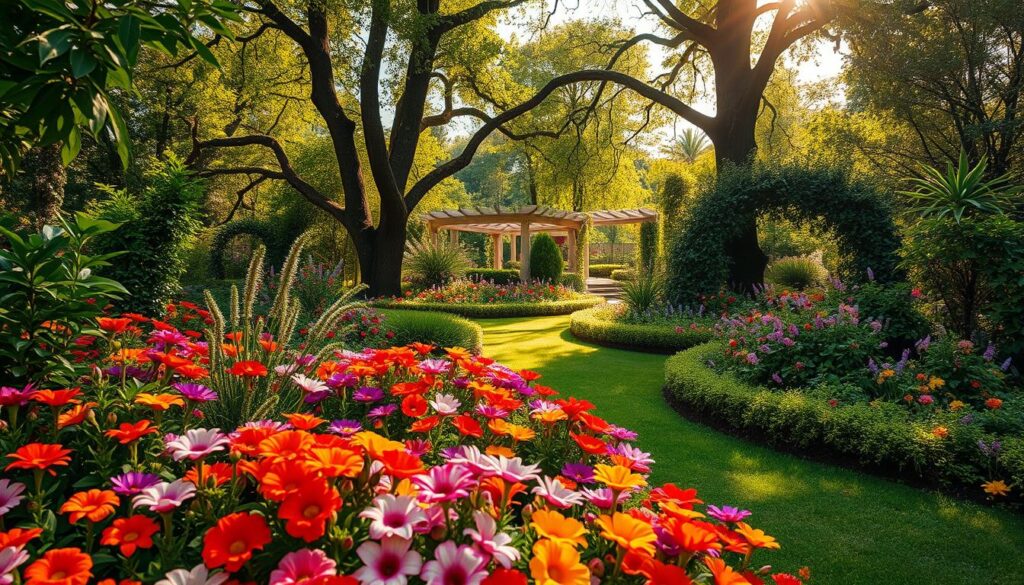
Five Free Flower Garden Plans to Explore
Here’s a curated list of successful layouts to inspire your next project:
- Woodstock Farm’s 34’x25′ Raised Bed Configuration: Perfect for small spaces, this setup maximizes yield with strategic plant placement.
- Rushville, IL’s Commercial Bouquet Layout: Designed for high-volume production, this plan focuses on efficiency and variety.
- Clay Soil vs. Loam Soil Plans: Compare how different soil types influence plant selection and growth.
- 3-Season Ohio Garden Progression: See how this space evolves from spring to fall, offering year-round beauty.
- Nova Scotia’s Detailed Seed-to-Bloom Timeline: A step-by-step guide to planting and harvesting.
Lessons from Successful Garden Designs
Analyzing these gardens reveals valuable insights. For example, Woodstock Farm’s raised beds demonstrate how vertical space can be optimized. Similarly, Rushville’s commercial layout highlights the importance of workflow efficiency.
“A well-thought-out plan not only enhances aesthetics but also ensures practicality and sustainability.”
Here’s a comparison of clay soil and loam soil plans:
| Soil Type | Advantages | Challenges |
|---|---|---|
| Clay Soil | Retains moisture, nutrient-rich | Poor drainage, hard to work with |
| Loam Soil | Balanced texture, excellent drainage | Requires regular amendments |
Scan the QR codes below to access the original plans and start your project today:
- Woodstock Farm: [QR Code]
- Rushville, IL: [QR Code]
- Ohio Garden: [QR Code]
Let these real-world examples be your inspiration for creating a space that’s both beautiful and functional.
Choosing the Right Plants for Your Garden
Selecting the perfect plants for your outdoor space can make all the difference. Whether you’re a seasoned gardener or just starting, understanding the varieties available and their needs is key to creating a thriving environment. Let’s explore the options to help you make the best choices.
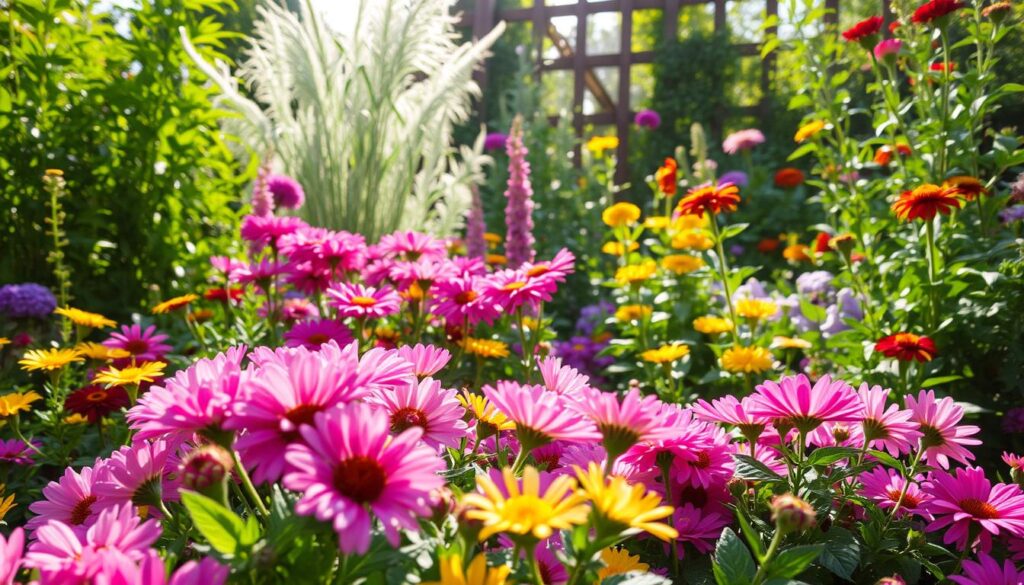
Annuals vs. Perennials: What’s Best for You?
When deciding between annuals and perennials, consider your goals and the time you’re willing to invest. Annuals, like zinnias, bloom for one season but offer vibrant colors. Perennials, such as black-eyed Susans, return year after year with minimal effort.
Here’s a quick comparison:
- Annuals: Bright blooms, perfect for seasonal color, require replanting each year.
- Perennials: Long-term investment, lower maintenance, bloom cycles vary by species.
For example, a Virginia garden showcased drought-tolerant varieties like Russian sage and lavender, proving that the right choice can save time and resources.
Top Low-Maintenance Flowers for Beginners
If you’re new to gardening, starting with easy-care plants can set you up for success. Here’s a list of beginner-friendly options:
- Russian Sage: Drought-tolerant and deer-resistant.
- Lavender: Fragrant and thrives in poor soil.
- Catmint: Low-maintenance and attracts pollinators.
- Sedum: Hardy and perfect for sunny spots.
- Yarrow: Adaptable and blooms in various colors.
These varieties are ideal for gardeners who want beautiful results without constant upkeep. Overwintering tips for biennials, like foxgloves, can also extend their lifespan and add variety to your space.
Seasonal Considerations for Your Garden
Keeping your outdoor space vibrant throughout the year requires careful planning. Each season brings unique challenges and opportunities, and understanding these can help you maintain a thriving environment. Whether it’s protecting plants from frost or planning for continuous blooms, a strategic approach ensures your area remains beautiful and functional.
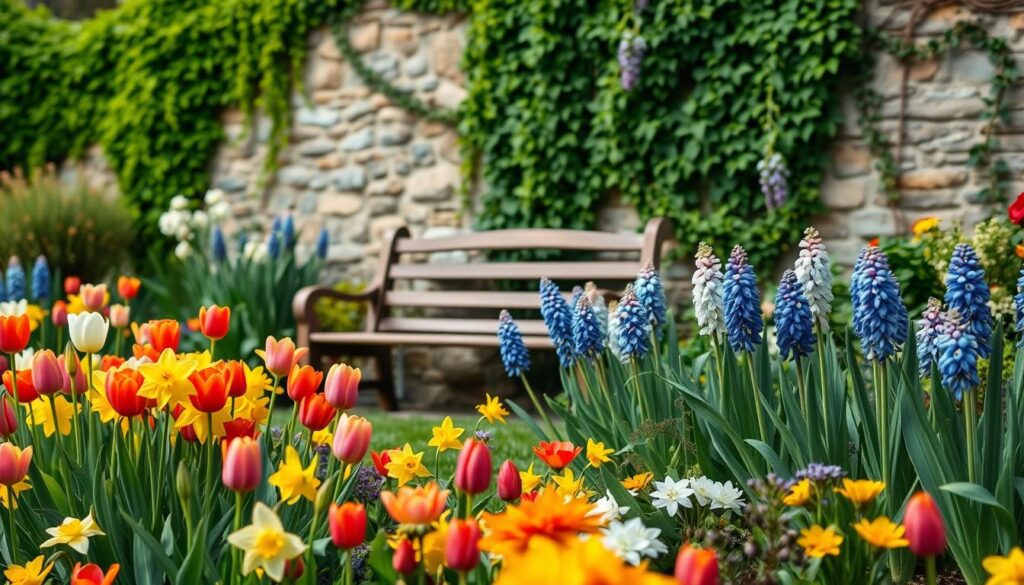
Planning for Year-Round Blooms
To enjoy continuous color, create a 4-season bloom calendar. Start by selecting plants that thrive in different seasons. For example, fall-blooming mums and asters add warmth to cooler months, while spring bulbs like tulips bring early cheer. In summer, zinnias and marigolds offer vibrant hues, and winter evergreens provide structure and greenery.
Sterling, VA’s three-season color strategy is a great example. By carefully timing plantings, they ensure their space remains lively from spring through fall. Succession planting, such as replacing spent marigolds with fresh zinnias, keeps the area vibrant without gaps.
Preparing Your Space for Different Seasons
Each season requires specific preparations. In spring, focus on soil enrichment and early planting. Summer demands regular watering and pest control. Fall is ideal for planting perennials and protecting plants from frost. Winter calls for winterization, including tool storage and plant protection.
Here’s a quick checklist for seasonal preparation:
- Spring: Test soil, add compost, and plant early bloomers.
- Summer: Water deeply, mulch to retain moisture, and monitor for pests.
- Fall: Plant fall-blooming varieties, apply frost protection, and clean up debris.
- Winter: Store tools, protect plants with covers, and plan for the next year.
“A well-planned space adapts to seasonal changes, ensuring beauty and health throughout the year.”
By following these tips and planning ahead, you can create a space that thrives in every season. Whether you’re a beginner or an experienced enthusiast, these strategies will help you make the most of your outdoor area.
Incorporating Color and Texture
Adding visual appeal to your outdoor area involves more than just selecting plants. Thoughtful use of color and texture can transform your space into a cohesive and dynamic environment. Let’s explore how to achieve this balance in a simple and effective way.
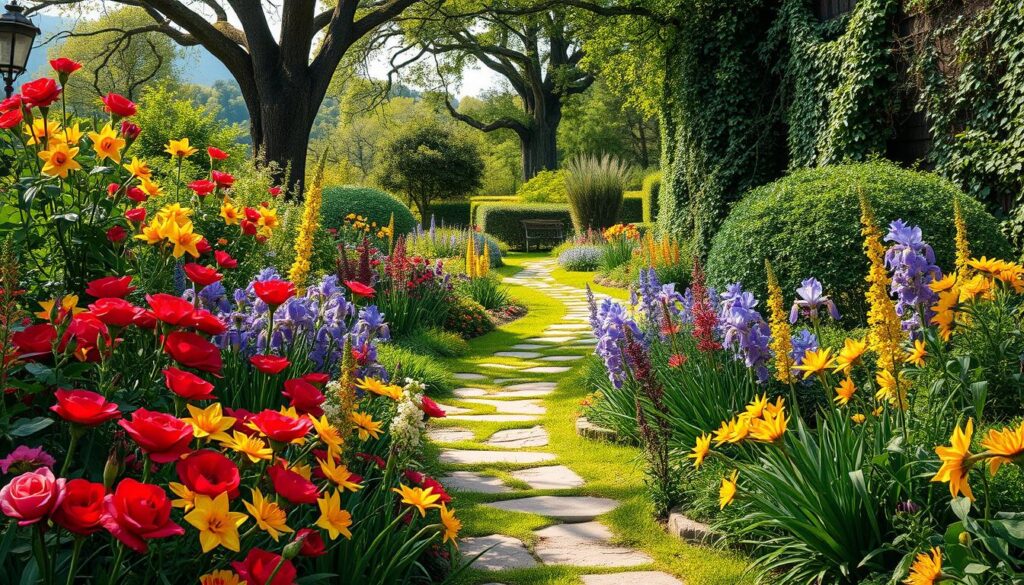
How to Create a Harmonious Color Palette
Understanding the color wheel is essential for creating a visually pleasing palette. Complementary colors, like purple and yellow, create striking contrasts. For example, Source 3’s Plan 04 effectively uses this combination to enhance visual interest.
Here are five trending color schemes for 2024:
- Soft pastels for a calming effect.
- Bold monochromatics for a modern look.
- Earthy tones for a natural vibe.
- Vibrant contrasts for a lively atmosphere.
- Cool blues and greens for a serene space.
Analyzing successful palettes, like the Ohio garden, can provide inspiration for your own designs.
Using Texture to Add Depth to Your Garden
Texture plays a crucial role in creating depth and interest. Combining plants with different leaf shapes and surfaces, like lamb’s ears and blue fescue, adds variety to your space. Here’s a comparison of foliage textures:
| Plant | Texture |
|---|---|
| Lamb’s Ears | Soft, velvety |
| Blue Fescue | Fine, spiky |
Experimenting with textures is a great way to enhance your designs and create a layered look.
For more creative ideas, check out these boho yard decor tips to complement your color and texture choices.
Practical Tips for Garden Maintenance
Maintaining a thriving outdoor area requires consistent care and attention. With the right tips, you can keep your space healthy and beautiful throughout the year. From watering techniques to pest control, these strategies will help gardeners of all levels achieve success.
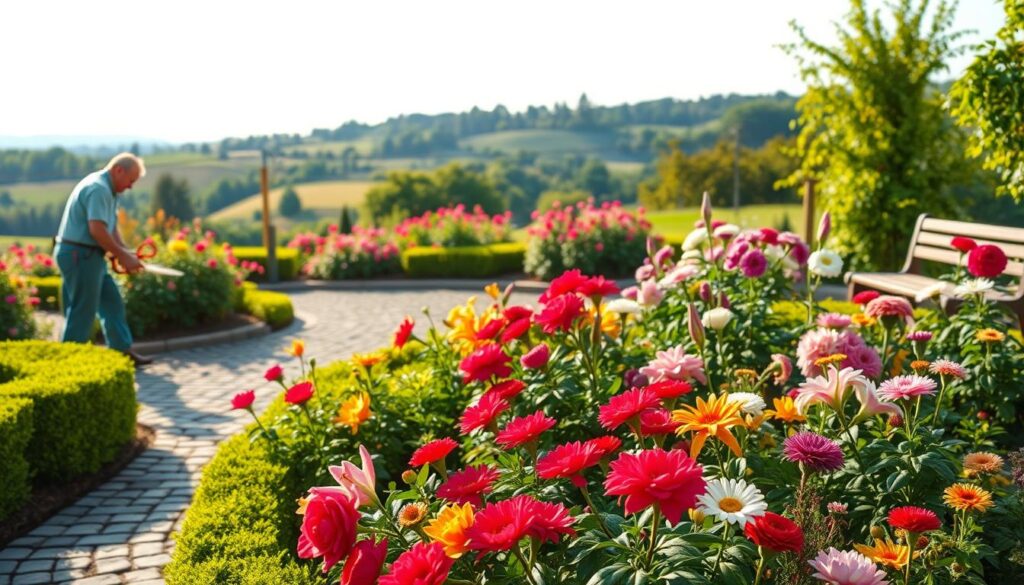
Watering and Fertilizing Your Plants
Proper hydration and nutrition are essential for healthy plants. Drip irrigation and soaker hoses are two effective methods. Here’s a quick comparison:
- Drip Irrigation: Delivers water directly to the roots, reducing waste and evaporation.
- Soaker Hoses: Ideal for larger areas, providing even moisture distribution.
For fertilization, consider organic recipes like compost tea or banana peel fertilizer. These natural options enrich the soil without harmful chemicals.
Dealing with Pests and Diseases
Pests and diseases can threaten your outdoor space, but natural remedies can help. For example, calendula is a great companion plant for pest control. Here are five common pests and their natural solutions:
- Aphids: Use a mix of water and dish soap to deter them.
- Slugs: Place crushed eggshells around your plants.
- Spider Mites: Introduce ladybugs to your space.
- Whiteflies: Hang yellow sticky traps nearby.
- Fungal Diseases: Apply a baking soda spray to affected areas.
The Cincinnati garden’s disease prevention routine includes regular inspections and proper spacing to improve airflow. These practices save time and keep your space healthy.
For ongoing care, follow this weekly maintenance checklist:
- Check for pests and diseases.
- Water deeply, especially during dry spells.
- Remove weeds to reduce competition for nutrients.
- Prune dead or damaged growth.
- Apply mulch to retain moisture and regulate soil temperature.
By following these tips, you can create a thriving and low-maintenance outdoor environment. Whether you’re a beginner or an experienced gardener, these practices will help you achieve lasting success.
Using Technology to Enhance Your Garden Plan
Technology has revolutionized the way we approach outdoor spaces. With advanced tools, you can now create detailed and accurate designs that were once only possible with professional help. These innovations make it easier to visualize and execute your ideas.
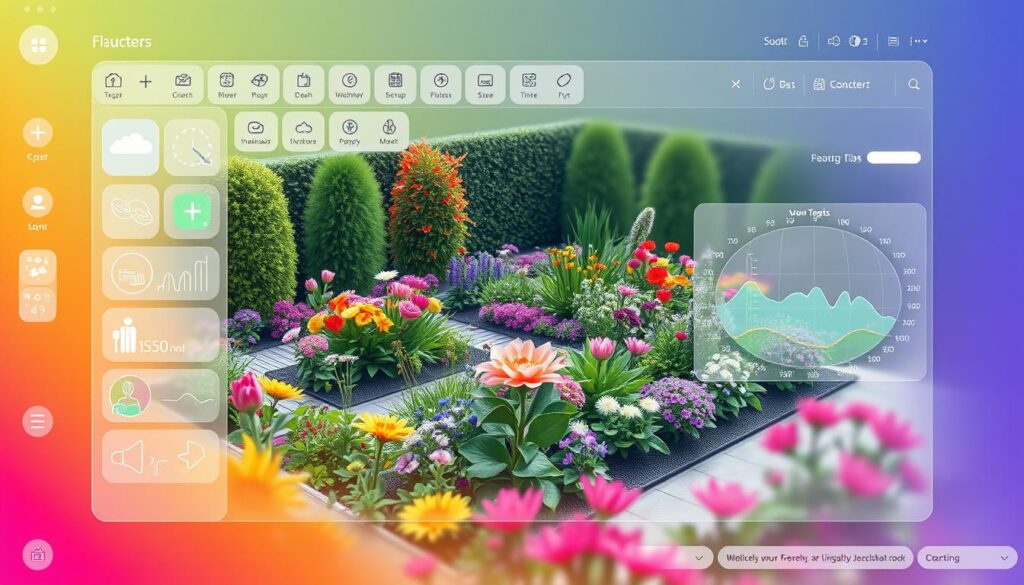
Exploring 3D Garden Planners
3D garden planners are a game-changer for outdoor enthusiasts. They allow you to see your space in three dimensions, making it easier to experiment with different layouts. For example, Planner 5D’s mobile app features real-time sun position tracking, helping you optimize plant placement for sunlight exposure.
Here’s a comparison of five leading garden apps:
| App | Key Feature |
|---|---|
| Planner 5D | Real-time sun tracking, 3D rendering |
| Garden Planner | Drag-and-drop tools, plant database |
| iScape | Augmented reality, photo integration |
| Home Outside | Professional-grade tools, collaboration features |
| SmartDraw | Cloud saving, version control |
These tools simplify the design process, making it accessible for everyone.
How Digital Tools Can Simplify Your Planning
Digital tools offer features that save time and improve accuracy. Augmented reality, for instance, lets you visualize plants in your actual space before planting. Cloud saving ensures your ideas are safe and accessible from any device.
A Nova Scotia garden’s 3D model showcases how these tools can transform planning. The time-lapse feature in some apps also helps track progress and adjust designs as needed.
“Digital tools not only enhance creativity but also ensure practicality and efficiency in planning.”
By leveraging these innovations, you can create a space that’s both beautiful and functional. Whether you’re a beginner or an expert, technology offers a smarter way to bring your vision to life.
Conclusion
Bringing your outdoor vision to life is simpler than you might think. Start by assessing your space and creating a detailed plan. From choosing the right plants to optimizing layouts, each step ensures your design thrives.
Before investing in paid tools, explore free options to save time and resources. Structured layouts not only enhance aesthetics but also make maintenance easier. A well-thought-out garden can transform your outdoor area into a functional and beautiful retreat.
For your next steps, try the Almanac trial to access expert guidance and templates. As an Ohio garden designer once said, “A thoughtful plan is the foundation of a thriving space.” Start today and watch your vision come to life.

